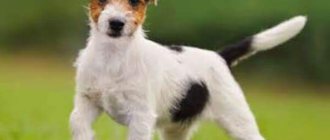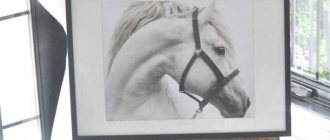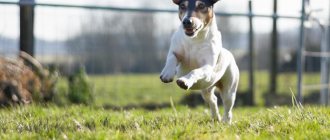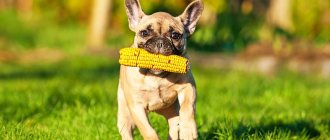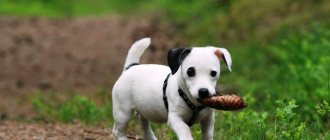The history of the emergence of such a breed as the Toy Terrier goes back to old England, where it was created and formed for the purpose of exterminating small burrowing pests such as mice and rats. These rodents were the main cause of epidemics, as they served as carriers of various infections.
But over time, when people learned to fight diseases on their own, the help of little hunters ceased to be necessary. It seemed that the breed was doomed to extinction, but fashion gave it a second life.
English toys appeared much earlier than Russian ones. If the history of English takes its origins from the 17th century, then the latter were introduced only from the middle of the past. Toy terriers very quickly won the hearts of people, especially the fair half of the population and children.
What should you buy?
Before purchasing a toy terrier, it is advisable to take care of the following items:
- A special enclosure or playpen structure.
- House, bedding.
- Bowls for food and water.
- Rubber toys.
- Toilet tray.
- Filler.
- Claw clipper.
Adult pet weight
An adult dog weighs about 3 kg.
Sometimes there are mini toys weighing 0.9-1 kg. This weight is considered normal for a boy.
But if you are going to breed puppies, the Toya girl must weigh more than 1.8 kg for gestation and birth without complications.
More often 1-3 puppies are born . Their weight is 70-170 grams, which is a lot for such a small dog.
Keeping a dog
Newborn puppies separated from their mother are defenseless and weak, so it is worth taking pets from the moment the small animals become independent.
Features of dog care:
- It is necessary to allocate a territory for the puppy. Accustoming a toy terrier to the litter is an important stage in raising a pet.
- Determine a place for the dog in the kitchen.
- It is mandatory to prepare items to care for a small puppy. These include the following things:
- emptying box;
- shampoo;
- liquid for ears;
- comb for combing wool.
Since the living space is a closed space, it is important to take care of comfortable conditions for the mini toy terrier. Representatives of this breed are very active animals, so dogs need to have a play area in the room.
This is interesting: How to determine the age of a toy terrier
Prohibited Products
There are foods that are not acceptable as dog food:
- fatty pork;
- raw chicken;
- smoked meats and sausages;
- freshwater and any raw fish;
- ready-made sauces (mayonnaise);
- fried foods (cutlets, etc.);
- pasta and flour products.
Taking into account all the nuances and characteristics of the breed, you can easily create a feeding diet and provide the puppy’s body with the necessary nutrients.
Care
All a Toy Terrier needs is care and patience.
This is interesting: Caring for long-haired toy terriers
List of periodic actions:
- cleaning ears and teeth;
- wiping the eyes with a cotton pad;
- washing the pet (since the breed is not long-haired, it is better to wash it 1-2 times every 6-7 months);
- claw adjustment;
- proper nutrition;
- toilet training;
- frequency of vaccination;
- constant monitoring by a veterinarian;
- timely combing (for example, the Russian Toy Terrier has long hair).
In order to take good care of this boy, you need to monitor not only the implementation of the recommendations, but also think about castration. Care for a girl, in addition to the above tips, includes preventing the consequences caused by estrus.
How to choose?
If you decide to purchase a toy terrier puppy, then you should do this no earlier and no later than eight weeks after birth .
Why is it so important to stick to these deadlines? The fact is that at this age the puppy will already have acquired certain habits that will be very difficult to re-educate. It will also not be possible to adopt a puppy before this time, since he will still be dependent on his mother due to the fact that his baby teeth have not yet erupted and he will not yet be able to eat on his own.
Attention ! A puppy offered for sale must be branded and, if it is already two months old, must be vaccinated.
Before buying a puppy, you must clearly define the purpose for which you are buying it.
Whether it’s visiting exhibitions with a pet or just a pet. Based on the purpose of purchasing an animal, you can determine the criteria for its selection.
If you decide to get a toy terrier to perform at various exhibitions, then it is important to find a serious and responsible breeder who has puppies in factory or exhibition condition. If this is your pet, there is no particular need to choose a show animal.
Let's take a closer look at the criteria by which you need to choose a puppy.
Health
This is the most important thing to pay attention to. It is very easy to recognize a healthy puppy . He will be curious, playful, cheerful. If you find just such an animal, it means that everything is in order with its health.
A puppy's behavior like this would be a bad signal: he wags his tail, but does not show much interest in strangers, avoids them and barks. This is a possible signal about problems with his health.
You can try to come at another time and look at the baby’s reaction again; if it remains unchanged, then it is better to look for another breeder.
Floor
Male puppies and female puppies have a number of positive and negative qualities . For example, a male dog will look more impressive at an exhibition. And bitches are characterized by a calmer character. In addition, they are easier to train and educate. Males, in turn, are more conflict-ridden and stubborn.
Another significant problem will be that uncastrated individuals mark everything and it is not always possible to solve this problem by castration.
Proper feeding
There are two types of food for an animal:
- Natural – cooked meat and fish. They also add to the dog’s menu:
- porridge: buckwheat, oatmeal and rice;
- vegetables: carrots, zucchini, broccoli;
- fermented milk products: fermented baked milk, kefir. It is acceptable to use milk for toy terrier puppies 1.5-2 months old.
- Specialized. The dog's diet includes dry or liquid food.
It is necessary to give preference to trusted manufacturers who have proven themselves in the market.
Expert opinion
Anna Abramenko
An avid dog lover. Experience in veterinary medicine since 2009.
Ask a Question
Mixing the two types of food is not recommended.
How many times a day should I feed my Toy Terrier?
The number of meals a toy eats varies depending on the age of the dog. Veterinarians suggest the following scheme:
- 1-2 months – 6 times a day;
- 3 – up to 5;
- 4 – 4;
- from 5 to 10 – 3;
- from 10 to 18 – 2;
- 18 and onwards – 1 or 2 times a day, taking into account the needs of the pet.
The calculation of the daily allowance for a dog varies depending on the weight of the toy terrier. For every kilogram there should be from 60 to 90 ml of food. It is also advisable to maintain a balance of proteins, fats and carbohydrates.
Prohibited Products
The following foods are prohibited for your four-legged friend:
- highly salted food;
- semi-finished products;
- sweets;
- baked goods;
- unboiled eggs;
- mushrooms;
- raw meat, fish.
Ready-made feed
Those specialists who have dealt with laboratory tests of feed can authoritatively state that the content of substances in feed does not correspond to what is written on the label. Unfortunately, manufacturers are well aware of how dry food testing works. Since it is not always possible to measure the quantitative composition of the substances stated in the recipe.
Both “simple” manufacturers and well-promoted product brands are guilty of inconsistency in composition. Very often, feed does not contain the required amount of vitamins and microelements, and expensive natural proteins are replaced with artificial amino acids.
High temperatures during production “kill” even heat-stable vitamins. Consequently, such food cannot fully provide the body with everything it needs.
When choosing food, you cannot rely on someone else’s opinion and experience. The food may be suitable for one dog, but cause pathology for another.
In any case, when deciding to feed dry food, you should give preference to:
- professional;
- designed for small breeds;
- labeled (indicating the composition, standard, date of production, address of the manufacturer).
Advantages
Without a doubt, feeding ready-made food is easy. If decent food is found and the puppy is cheerful, energetic, has good growth, and has no problems with the skin and mucous membranes, then it can be used.
Disadvantages of ready-made feeds
The disadvantages can be listed as follows:
- uncertainty of composition;
- imbalance of components;
- even expensive food contains preservatives and emulsifiers, which can cause pathology in the body;
- frequent replacement of natural ingredients with artificial additives.
Upbringing
Raising this breed is of great importance, since an untrained dog can turn the owner’s life into hell. It is recommended to teach your pet:
- respond to the owner's call;
- defecate in a tray;
- be loyal to the leash;
- do not show aggression towards other animals;
- do not chew things;
- know the simplest commands.
Expert opinion
Anna Abramenko
An avid dog lover. Experience in veterinary medicine since 2009.
Ask a Question
For accurate fulfillment of the toy’s request, it is recommended to praise or reward him with a treat.
Place in the apartment
The toy terrier needs to know where his bed is located. Under no circumstances should you take your dog into your bed.
Toilet training
If the puppy has made a puddle in the apartment, then you should not shout or hit the toy terrier loudly. Hygiene training will go much faster if the space where the dog can defecate is minimal.
Walking
Rules of behavior for the owner and dog while walking:
- Before going outside, you need to pick up the dog in your arms.
- You cannot give your dog freedom of action if there is a highway nearby.
- Before letting your toy roam around the area, it is recommended to check if there are any aggressive dogs nearby that pose a danger.
- It is advisable to walk with a female terrier when she is in heat in places where there is less chance of meeting male dogs. Otherwise, the intense smell will attract males.
- Dogs are allowed to go outside only after vaccination.
Expert opinion
Anna Abramenko
An avid dog lover. Experience in veterinary medicine since 2009.
Ask a Question
It is recommended to walk an adult dog twice a day, since keeping a dog in the house every day can negatively affect its health.
At what age do toy terriers have their tail docked?
According to dog experts, the ideal time for tail docking is at birth . A newborn baby experiences virtually no pain, and the procedure is easier for him.
If the tail was not docked during this period of time or in the next week, then it is better to seek help from a veterinarian or call him at home.
To be more precise about the age at which such an operation is performed, dog breeders agree that if the puppies are born healthy and strong, this procedure can already be carried out by 3-4 days . If the animal will not participate in exhibitions, then it is permissible not to carry out this operation at all.
Disease susceptibility
Toy terriers are susceptible to diseases such as:
- enteritis;
- plague;
- rabies;
- hepatitis;
- conjunctivitis;
- allergy;
- leptospirosis.
Expert opinion
Anna Abramenko
An avid dog lover. Experience in veterinary medicine since 2009.
Ask a Question
If you suspect the development of one of these diseases, your dog requires immediate veterinary attention.
Walks
As soon as your baby starts taking street walks with you, you should also take care of the equipment: collar, leash (or harness) and clothes. The delicate skin of toys, completely devoid of undercoat, is vulnerable to both cold and sunlight.
best to start socializing your toy by introducing him to the neighbors’ dogs from a young age .
Important! Mandatory after you have completed the second course of vaccinations.
Vaccinations
There are preventive vaccinations that should be performed periodically. In addition, the introduction of the vaccine is divided into mandatory and additional.
Vaccinations of the first type prevent diseases in the toy terrier such as:
- rabies;
- hepatitis;
- leptospirosis;
- plague;
- bordetellosis;
- adenoviral infections;
- parovirus enteritis.
Vaccinations of the second type are recommended to prevent pathologies such as:
- canine parainfluenza;
- encephalitis;
- coronavirus enteritis;
- fungal infections;
- piroplasmor.
The sequence of vaccinations followed by veterinary clinics:
- At the age of three weeks, Toy Terrier puppies are required to receive vaccinations against parainfluenza and borderllosis.
- At 1 month - from plague.
- B 2 – for the prevention of leptospirosis.
- B 3 – from hepatitis, enteritis, rabies, etc.
Vaccination
Vaccinate the puppy no earlier than after 2 - 2.5 months.
- The first vaccination is carried out in two stages with an interval of 7-10 days.
- At the age of 6 - 6.5 months, the next vaccination is carried out with the drug "Biovac", which contains weakened bacteria from 18 pathogens. Because of this, it is considered the most difficult for a dog.
- 21 days after this drug, vaccination against rabies is carried out.
Further vaccinations should be done once a year throughout the pet’s life.
Clothes and toys
Since the dog loves to move, its owner will need a list of what additional items he needs to purchase for his toy terrier.
List of items that will always please the dog:
- different types of balls;
- Flying saucer;
- rubber bone;
- rope ropes;
- tweeters.
Also, a toy terrier puppy needs clothing in the cold season.
- overalls with padding polyester inside;
- booties for paws.
Bitch after giving birth
If the bitch is unable to care for the puppies in the first few days (for example, after a caesarean section), you will have to imitate the actions of the dog by massaging the puppies' bellies with a warm, slightly damp cloth. A mother bitch coming off anesthesia, especially if she is a first-time mother, may be somewhat shocked by the appearance of puppies underneath her, and may become quite nervous when the small newborn puppies begin to crawl over her extremely painful belly. Therefore, when the bitch finally comes to her senses, return the puppies to her one at a time and observe her reaction before introducing the remaining puppies to her.
If she has had a litter before, she will most likely take them under her and will look after them normally even despite the stitch on her belly. However, a bitch who has become a mother for the first time will behave a little more warily, so sit next to her at all times. It will be good if you have an assistant to make your task easier. The point is that if the mother is restless, she needs your constant presence for several days and nights.
You can walk away for a minute and return to find that the bitch, for example, has licked and chewed off part of the umbilical cord along with the peritoneum, or has calmly chewed off the heads or limbs of her puppies. This is rather a rare and atypical behavior for a mother bitch, but you need to know about it and be prepared for it. You can also keep the puppies in the first 24 hours after a caesarean section in a box with a heating pad next to the bitch and place the puppies only for feeding. If the dog shows no interest in puppies at all, it may be sick. Call a doctor without delay.
Useful tips
- It is best to discuss your pet's diet with your veterinarian. The doctor knows which foods are healthy and which are not, and will recommend the correct daily menu for the dog.
- It is recommended to always keep the animal's resting area clean.
- If your pet begins to regurgitate food or sits on the tray for a long time, it is better to check your toy terrier for worms.
The health of any animal depends on its proper maintenance. When purchasing a dog of a special breed, you should take into account not only all the nuances in its upbringing, but also your capabilities.
When do puppies' teeth change?
In Toy Terrier puppies, teething begins to change at 4–6 months, and by the age of one year, all of the dog’s milk teeth fall out. The owner can speed up this process if he manually loosens the teeth every day.
As a rule, incisors change at five months, canines change at 5–7 months, premolars at 4–6 months, and molars at 4–7 months.
This period in a dog’s life puts quite a lot of stress on the body. Milk teeth with large roots may not fall out for quite a long time, causing significant discomfort to the animal. At this time, the dog may be lethargic, have no appetite , and even the ears, which are already confidently erect, may droop again.
Important: Poor dental care can lead to the development of malocclusion. Dogs with such a defect face disqualification from the exhibition if it is a show class dog.
It is possible to remove baby teeth in a clinic, but there are a number of disadvantages. If the operation was performed under general anesthesia, it may take a long time for the dog to recover from it; subsequently, such methods of anesthesia cause harm to the dog’s body.
When a dog's teeth are forming, under no circumstances should the puppy be given hard objects or bones to chew on, or allowed to play with sticks, and it is also not recommended to vaccinate the puppy until the process is completed.
The main thing to remember is that the pet’s health will depend entirely on the owner. An animal that is surrounded by attention and care will always look great. And most importantly, in return you will receive a devoted friend!



